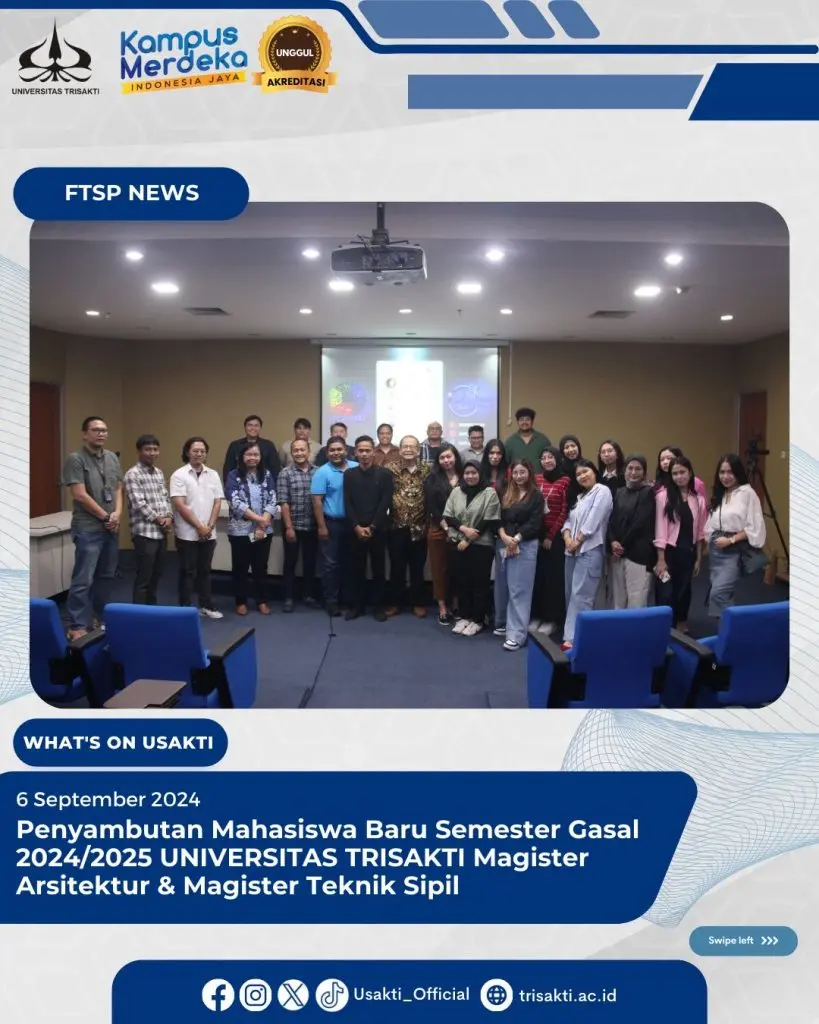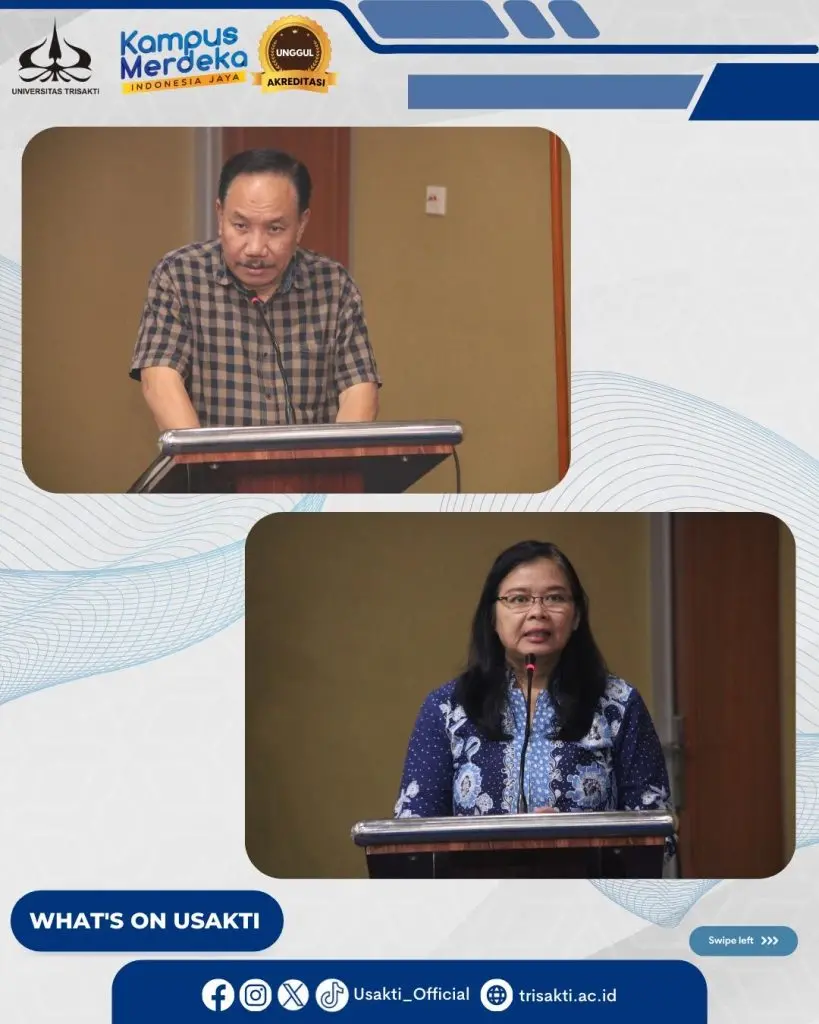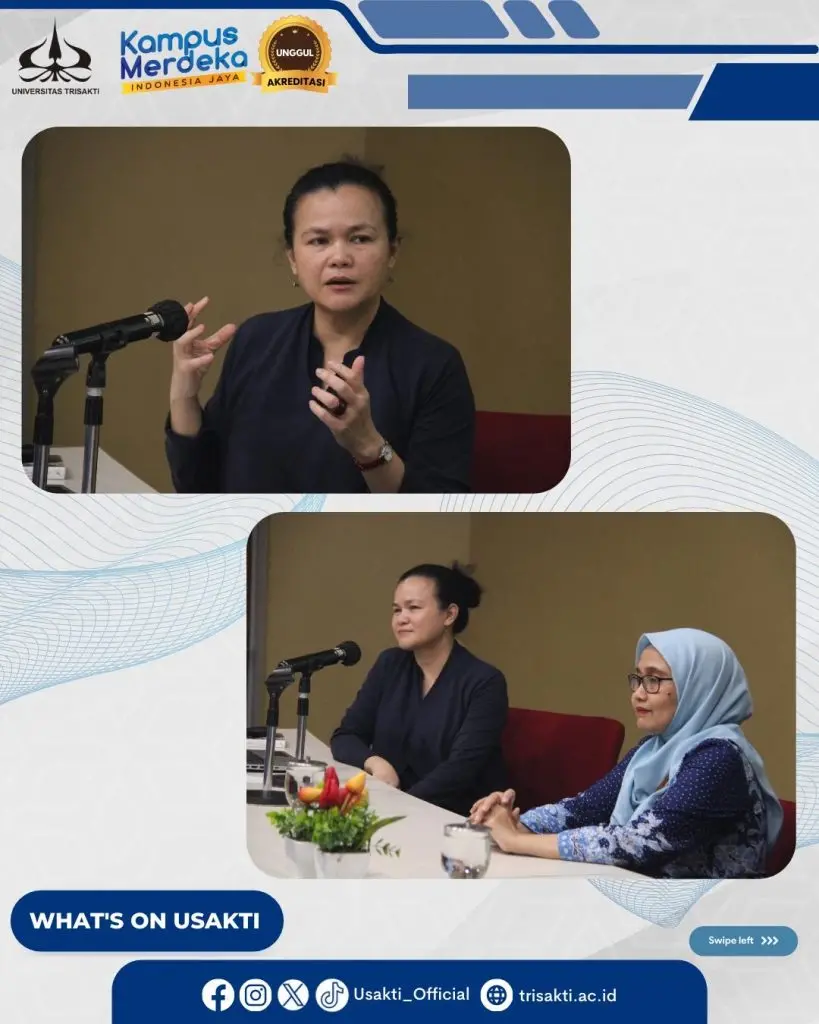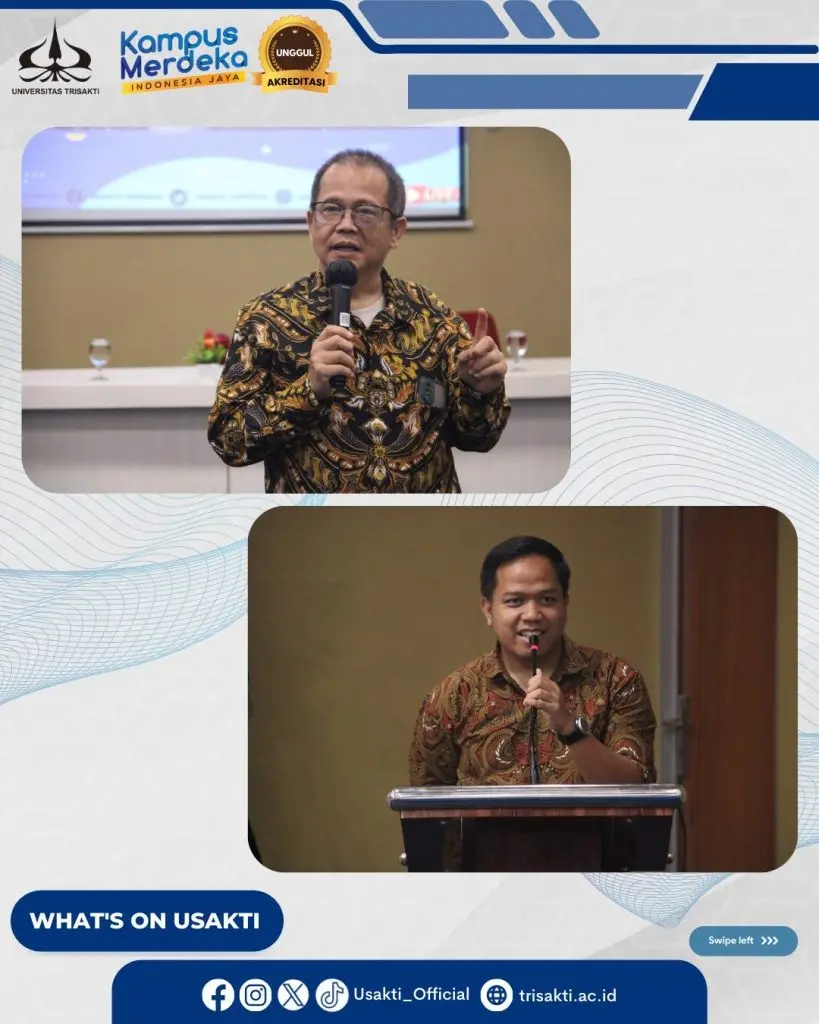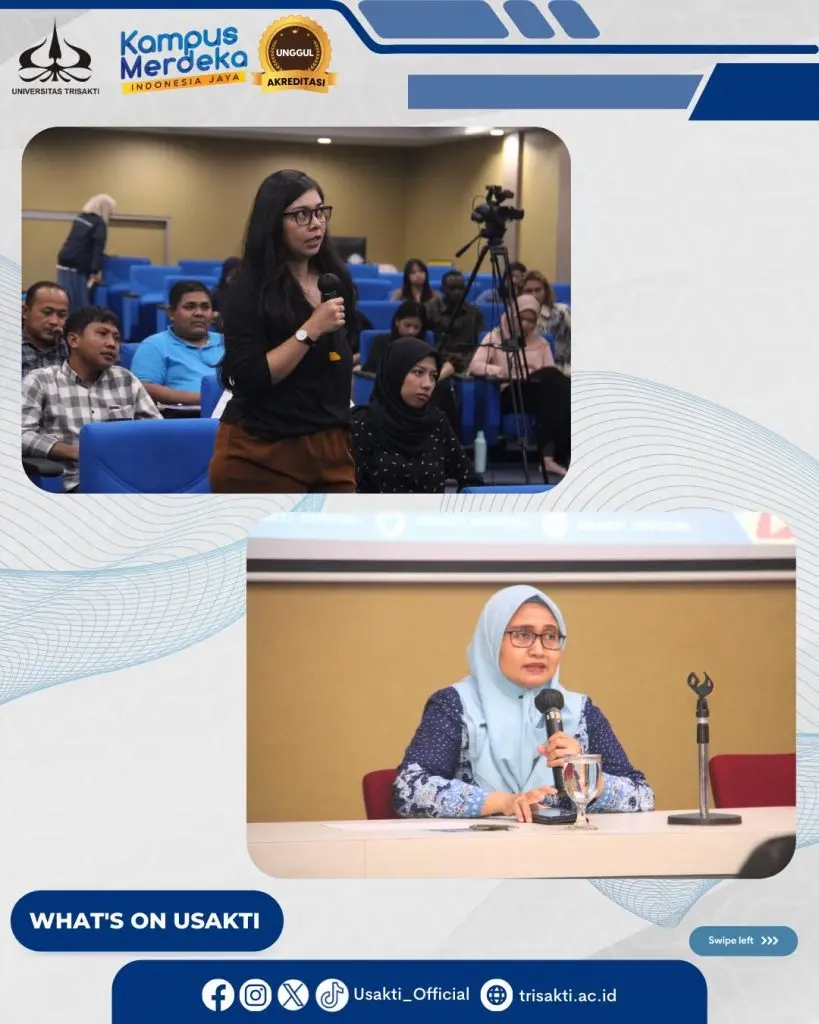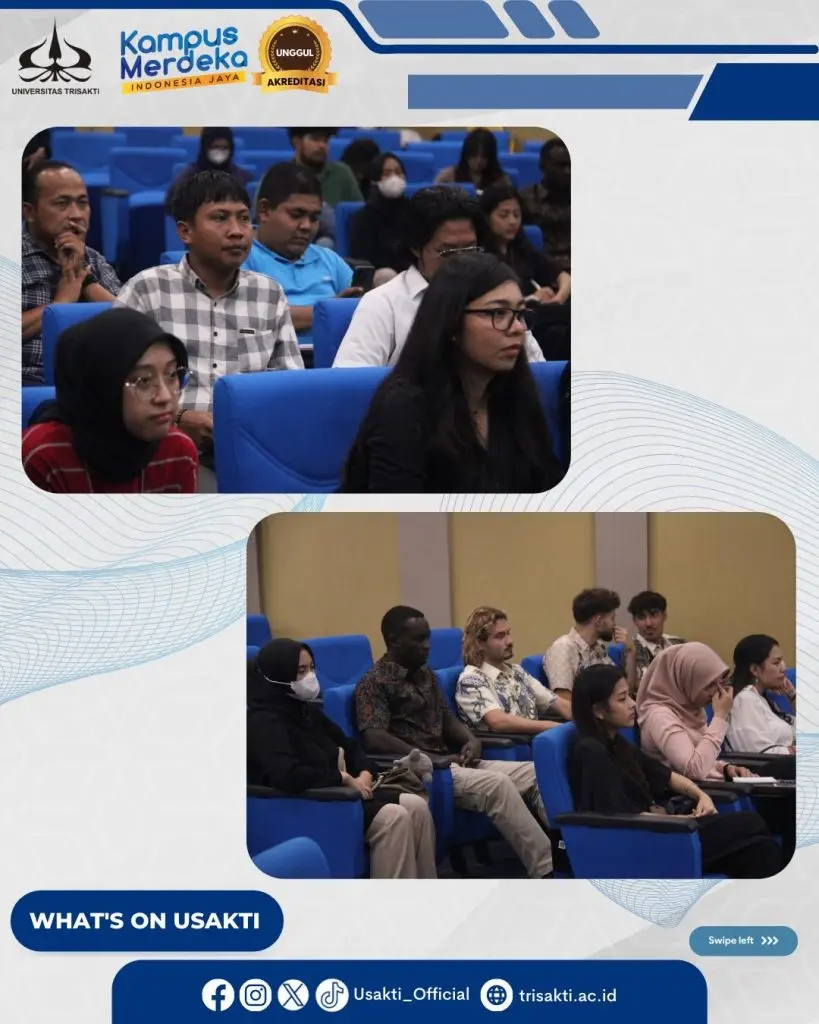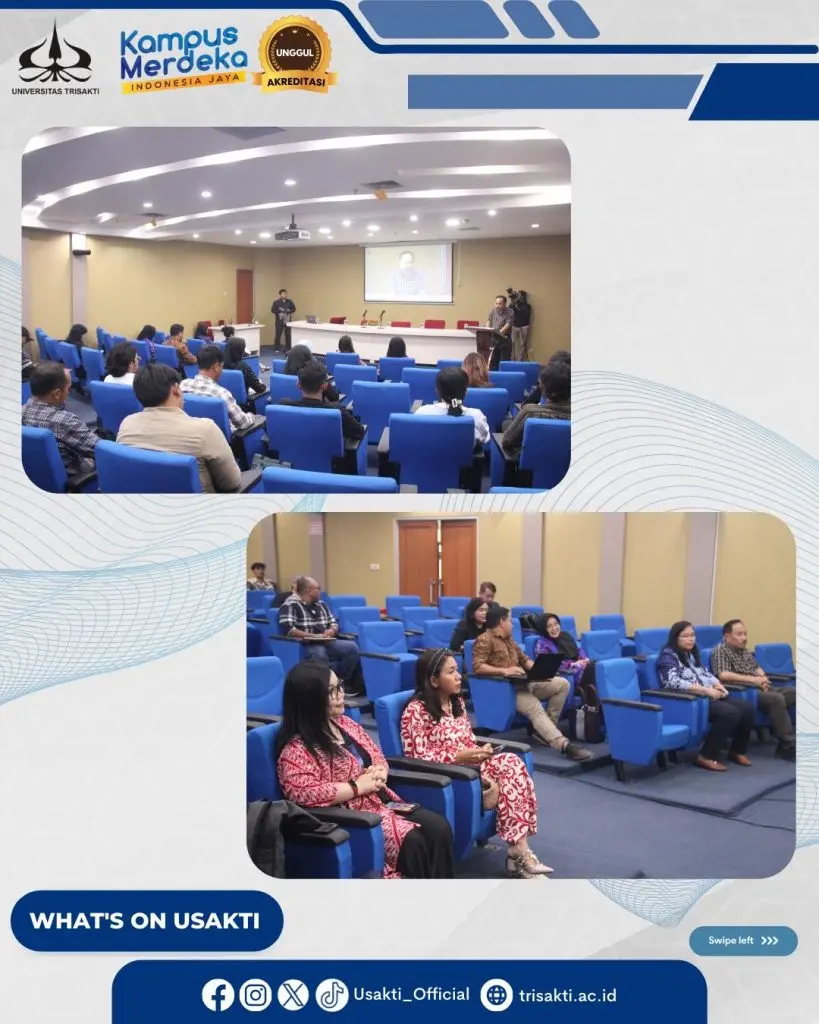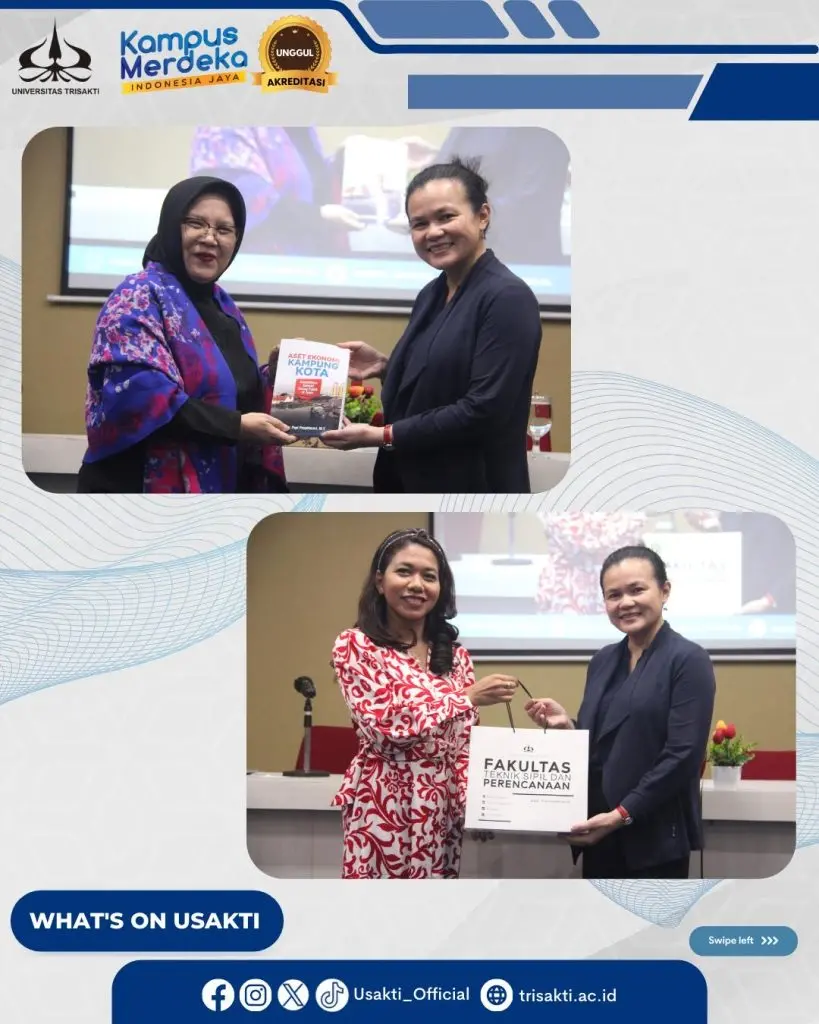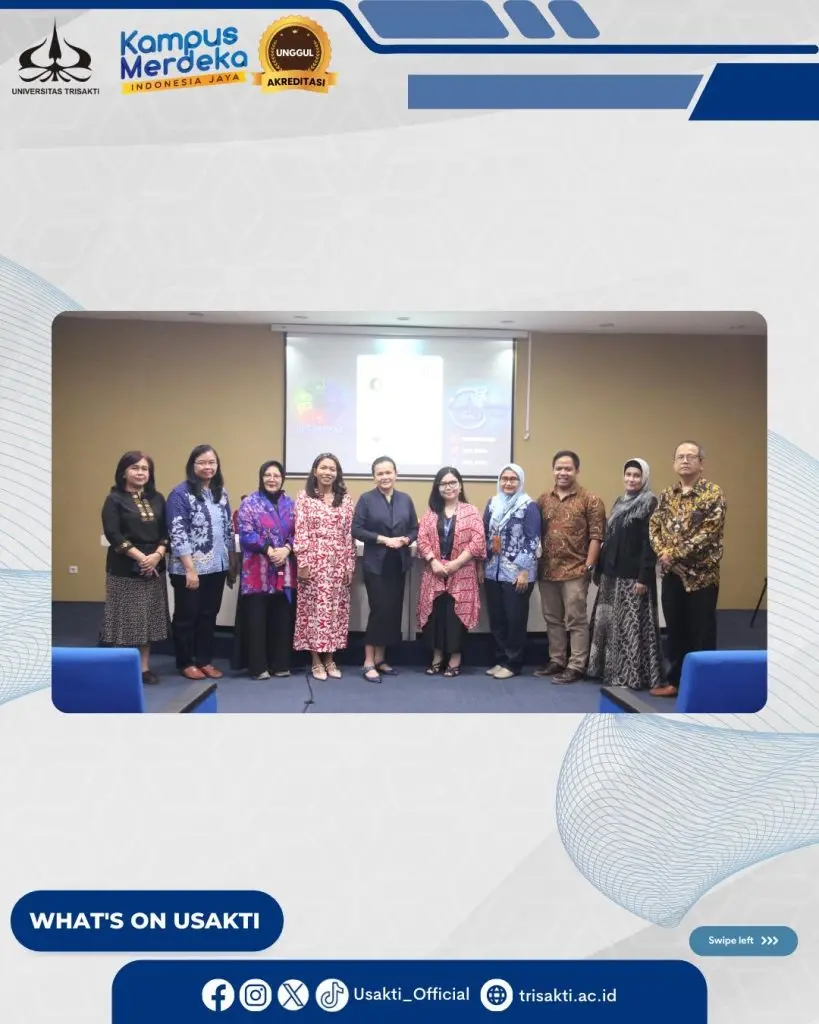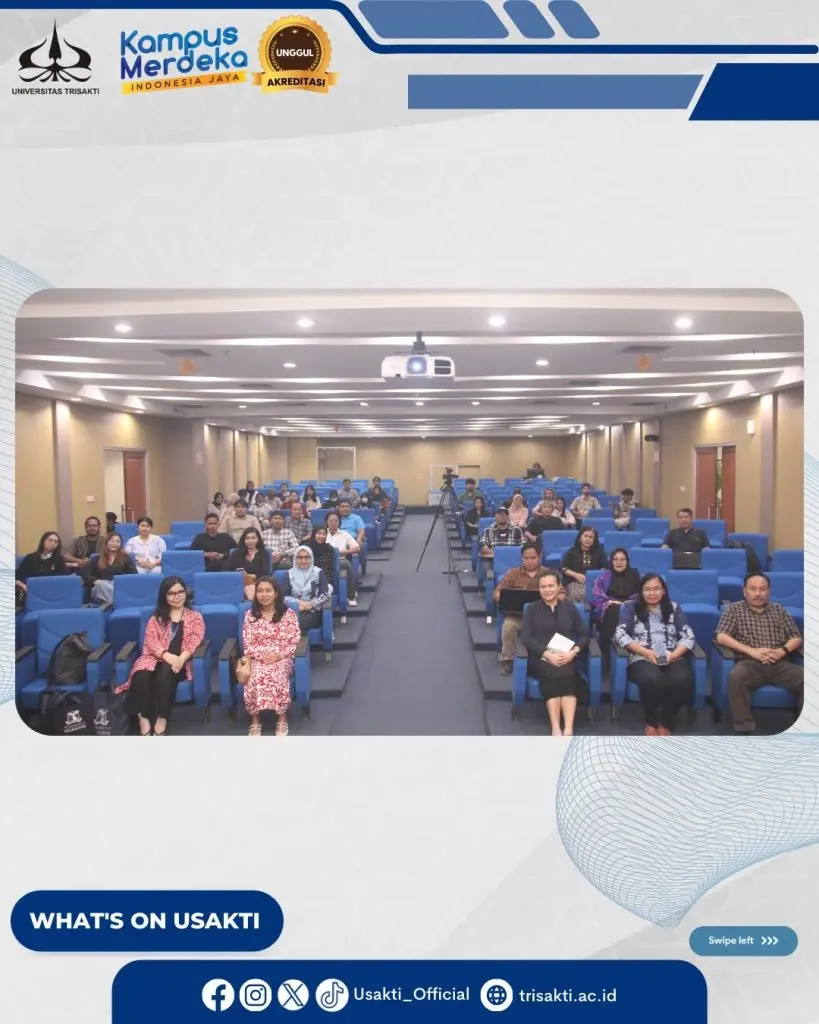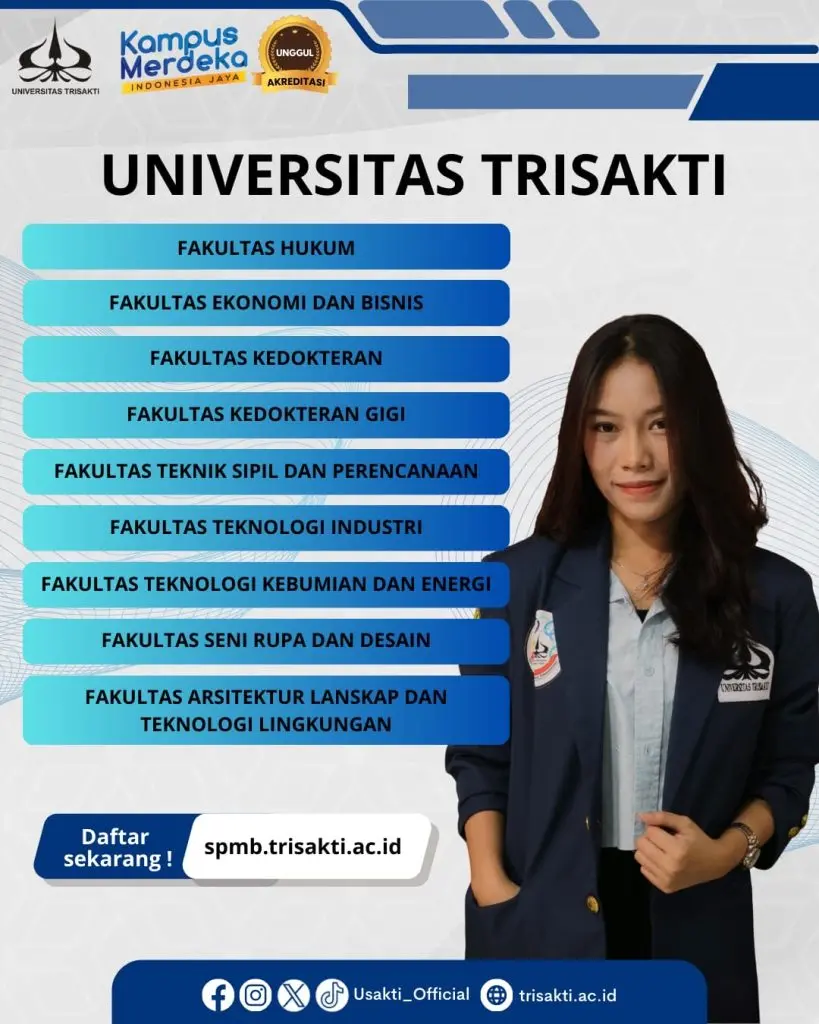Contact Us
- JL. Kyai Tapa No. 1 Grogol
- Jakarta Barat, Indonesia
- Phone:
- (62-21) 566 3232
- Whatsapp:
- (+62) 882 194 856 74
- (+62) 877 707 077 03
- Fax: (62-21) 564 4270
- Email: humas@trisakti.ac.id
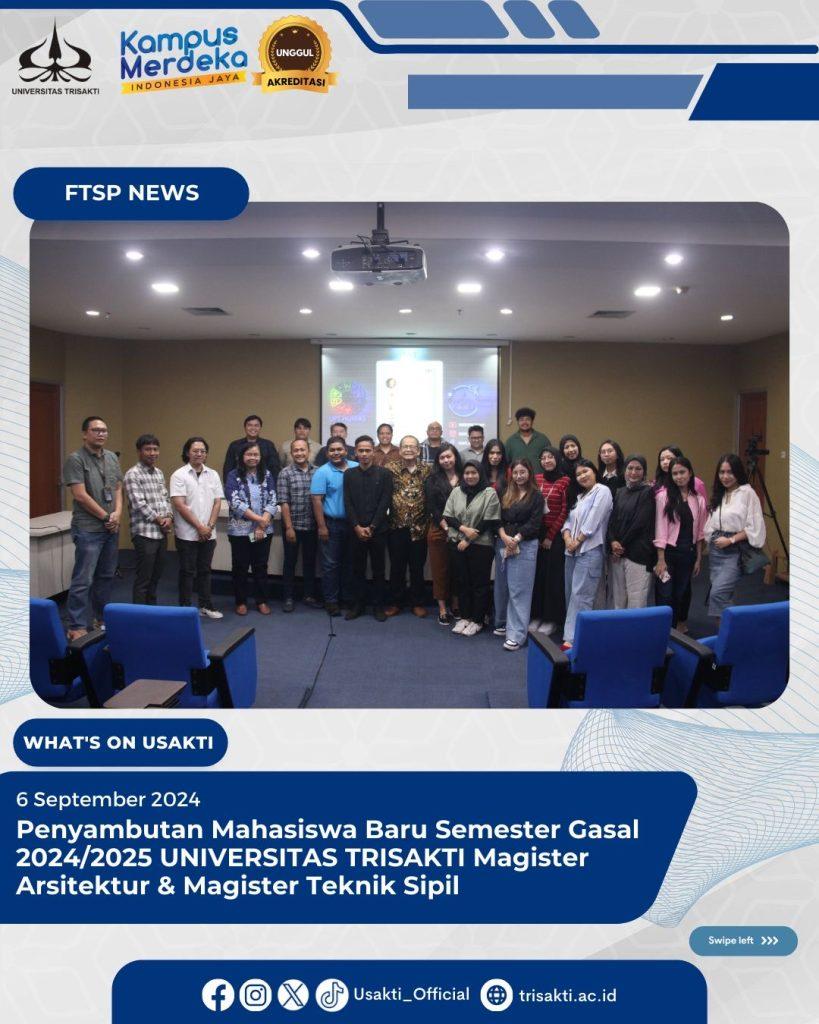
Jakarta, September 6, 2024 – The Faculty of Civil Engineering and Planning Universitas Trisakti held a welcoming ceremony for new students of the Master of Architecture & Master of Civil Engineering for the Odd Semester 2024/2025 on Friday, September 6, 2024, at the Auditorium of Building C, Universitas Trisakti Campus A.
The event was attended by the Dean of FTSP Usakti, Dr. Ir. A. Hadi Prabowo, MT., Vice Dean for Academic Affairs, Dr. Ir. Popi Puspitasari, MT, Vice Dean for Planning and Development, Dr. Lisa Oksri Nelfia, ST, MT, MSc, Head of the Master of Architecture Program, Dr. Ir. Lucia Helly P, MT, Secretary of the Master of Architecture Program, Dr. Retna Ayu Puspatarini, ST, MT, Head of the Master of Civil Engineering Program, Dr. Ir. Darmawan Pontan, SE, MT, MM, Secretary of the Master of Civil Engineering Program, Wahyu Sejati, ST., MT, as well as new students of both the Master of Architecture and Master of Civil Engineering programs.
The ceremony was officially opened with a speech by the Dean of FTSP Usakti, Dr. Ir. A. Hadi Prabowo, MT., who emphasized that the Welcoming Ceremony for New Students of the Odd Semester 2024/2025 at Universitas Trisakti for the Master of Architecture & Master of Civil Engineering programs marks the beginning of a deeper understanding of architecture and civil engineering at the master’s level. He expressed the hope that new students would enhance their innovation and creativity in applying the knowledge they acquire at FTSP Usakti to the professional world.
The event continued with a presentation by a guest lecturer, Amanda Achmadi, Associate Professor in Architectural Design at the Faculty of Architecture, Building, and Planning, University of Melbourne. She presented a theme titled “Architectural Encounters in Asia Pacific: Built Traces of Intercolonial Trade, Industry, and Labour, 1800s–1950s.” In her presentation, she explored how the built environment in the Asia-Pacific region reflects the historical dynamics of intercolonial trade, industrial growth, and labor movements during that period. As European colonial influence expanded, they left significant architectural traces—from warehouses and ports to factories and residential areas. These structures not only facilitated the exchange of goods and labor between colonies but also played a role in shaping the socio-economic landscape of these regions. The architectural remnants reflect a blend of local and foreign influences, contributing to the unique architectural heritage found in the Asia-Pacific today.
After the presentation, the event concluded with the distribution of souvenirs, a group photo, and a networking session. It is hoped that this event fosters closer relationships between students and faculty, contributing to a more effective learning environment at FTSP Usakti.
Source: Public Relations Office, Universitas Trisakti
